

It’s a scary thing to head off on your next big adventure with a group of strangers. But still: the people who come back from their first group tour and still find themselves among people they don’t know are few and far between.
Today, I will give you some insight into what to expect on your first group tour.
If you’re going on a group tour, you’ll get to share experiences with strangers, which might seem like a very intimidating thing – at first.
However, you’ll have a competent group leader with you, who will take care of nasty situations before you even know they’re there.
Anyway, here are some things you need to know before going on an organised group tour.
Skip ahead with the following links:
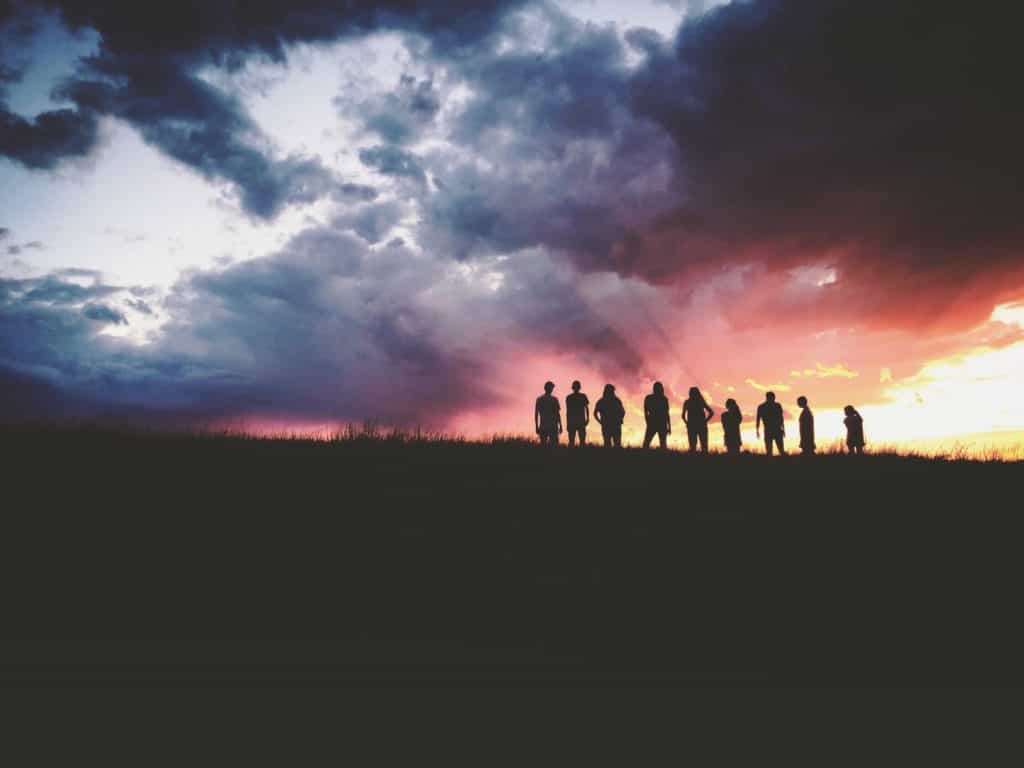
Before you can book your first group tour, there are a few things you need to look into.
(FYI: My first group tour was this road trip through Rajasthan)
It’s always in your best interest to pack light, especially if you’re going on a trip where you’ll be travelling between cities.
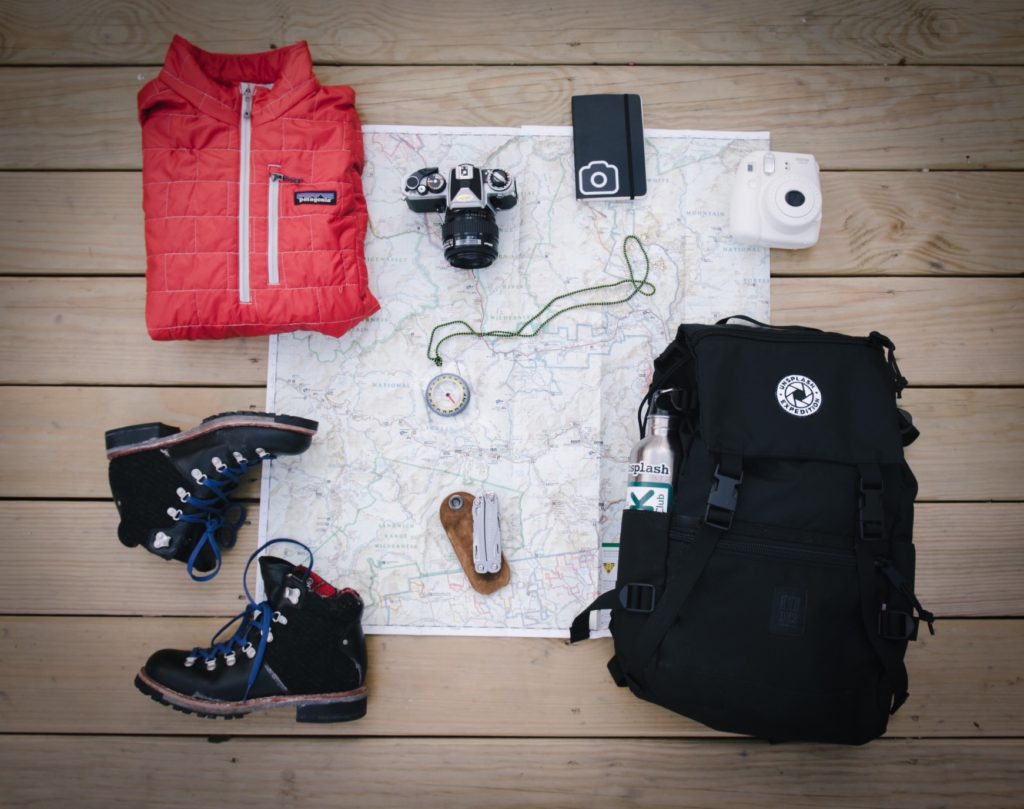
It gives you more manoeuvrability, it’s better for your body and it will make your trip much more pleasant.
And, although it’s not always possible to travel carry-on only, you can still put in some effort to make your checked bag as light as possible.
More detailed guide: How To Pack Light: The Ultimate Guide
First of all, here are some things you shouldn’t pack:
Now, on to some actual tips for packing light:
On a group tour, you usually want to see and do as many things as possible. Inevitably, this also means that you’ll be doing a lot of travelling between places.
Bus, train, subway, rickshaw, …
The sky is the limit when it comes to transportation options.

Keep in mind, though, that travel time on a group tour is not necessarily wasted. Since you’re in it together with your whole group, you might as well take this opportunity to get to know your fellow travellers.
After all, why can’t the journey be part of the charm of your trip?
Rules are inherently in place to be followed.
And no, I probably won’t snitch on you if you forget to use your indicator lights once when turning right, but I do believe that the rules are there for a reason.
It’s no different when you’re on a group tour. The rules were created by your touring company to make sure that everyone involved has the best possible experience, and you don’t want to be the one spoiling the fun for everybody.
Just follow the damn rules.
The odds of everybody in your group becoming a friend for life are admittedly quite low. But hey, that’s not an issue. The whole thing with group tours is that, well, you’re in a group.
As long as you can find a few people you can vibe with, you’ll be fine. And, honestly, it’s very unlikely that you’re not going to find anybody with similar interests on a group tour.
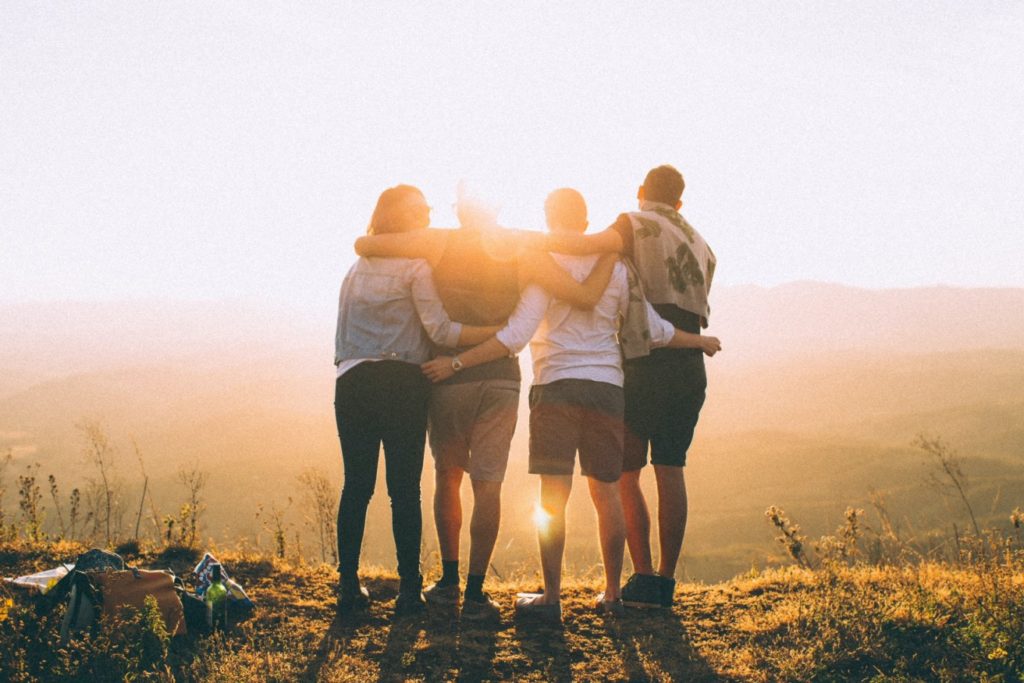
Just take the first part of your tour to get to know everyone and find out where the potential friends are, and then spend the rest of your time actually becoming friends.
Check out my tips on making friends as a solo traveller – don’t worry, many of them also apply to group travel.
According to psychological research, most people will behave differently than they usually do when they’re thrown into a new group.
You might be a bit louder, a bit more reserved or a bit more eccentric than you are in everyday life.
That’s why it’s important not to judge people by your first impressions, but rather to wait a few days before you can really find out what you think of them.
Don’t rule out potential friendships because you didn’t like the way the other person acted on day one.
When you’re on a group tour, you often experience extraordinary things. Things you wouldn’t experience at home (like visiting an abandoned children’s hospital or going on a camel safari).
And that’s exactly the reason why your first group tour is the perfect moment to start trying new things.
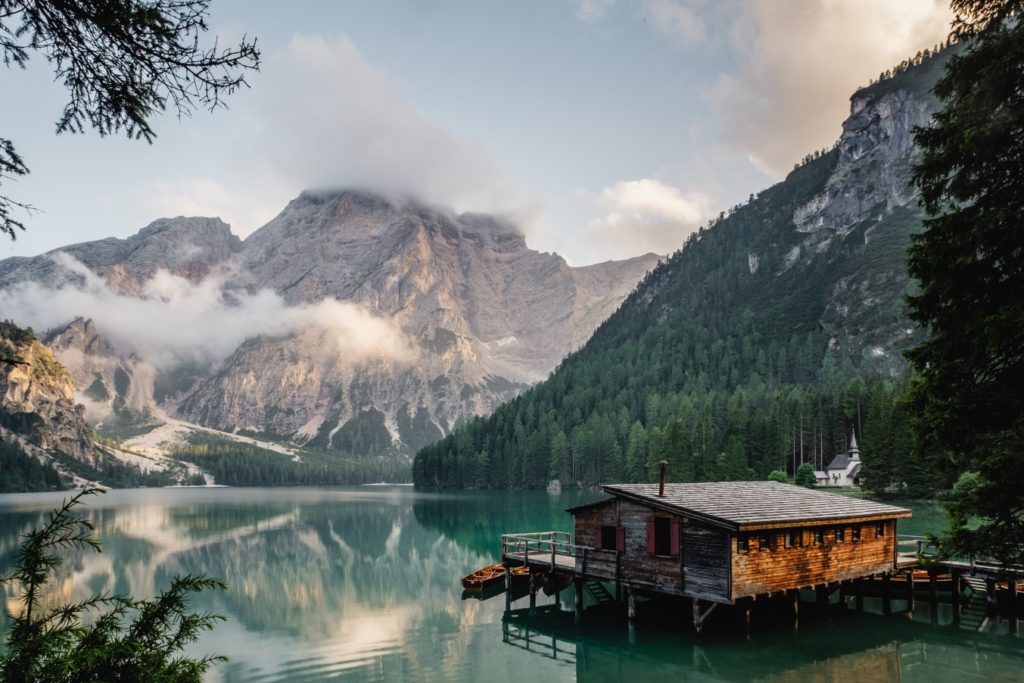
Eating exotic meat? Jumping out of a plane? You might say no to those things when you’re in the safety of your comfort zone, but you should reconsider that answer while you’re abroad.
As I mentioned above, you won’t become BFFs with everyone on your first group tour. Take it from me.
One thing you can do, however, is try to find common ground with the people in your group. The truth is, you probably have more in common than you think.
You picked a certain trip based on the activities, the destination, and a whole array of other factors.
Well, I’m going to let you in on a little secret. Your fellow group members did exactly the same thing.
So the fact that you eventually picked the same trip should already tell you something about the kind of person they are.
And that’s exactly why you automatically have common ground with people on a group tour, even if it might not seem like it at first.
Depending on the organisation behind your trip, some things may or may not be included in the price of your group tour.
Usually, tour operators include things like local transport and accommodation in the price you pay for the trip and recommend you set apart a certain amount of money for things like food, drinks, activities and entrance fees.

Before you book your group tour, make sure you know what you’re paying for upfront and what you’ll still have to pay on the trip itself.
On a group tour, it’s not uncommon for the people who are travelling together to become a tightly-knit group in a short amount of time.
And, very often, reunion plans are already being made while you’re still together.
But unfortunately, those plans too often end up being the furthest you will get, unless there’s somebody in your group willing to put in the effort of getting everyone together again.
You could be that person for your group. I’m just saying.
But still – especially if you’re on a group tour with people from all around the world – you need to be prepared to say goodbye for real when the trip comes to an end.
Now that you know as much about the pros and cons of group tours as I do, you’re more than ready to book one for yourself.
Is there anything you’re still unsure about? Be sure to let me know in a comment or email me and I’ll get back to you as quickly as possible!
PIN IT!
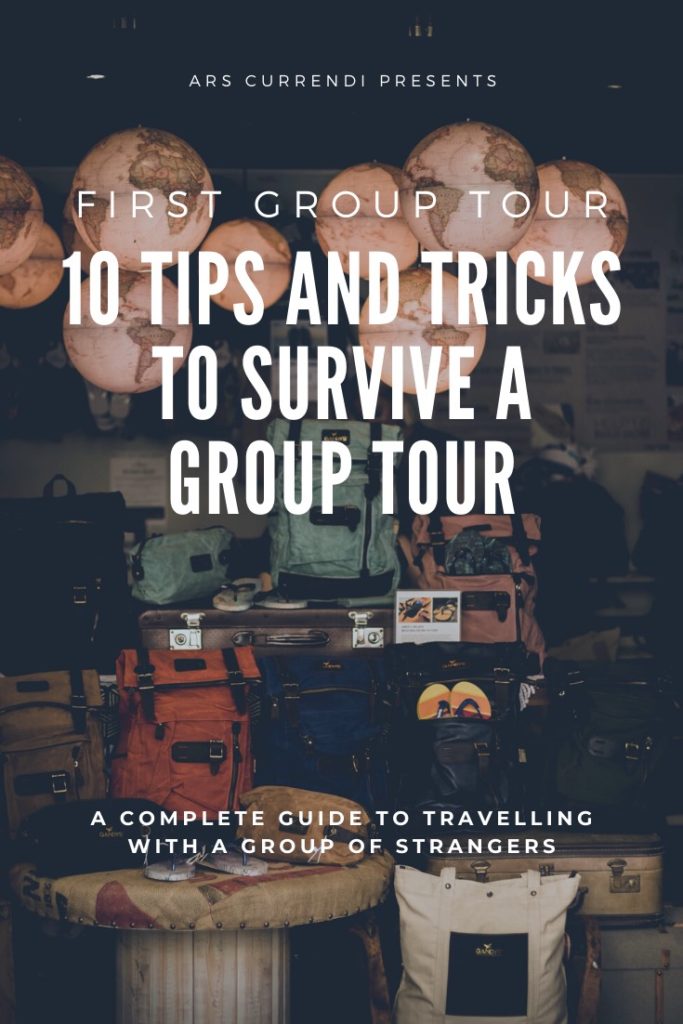
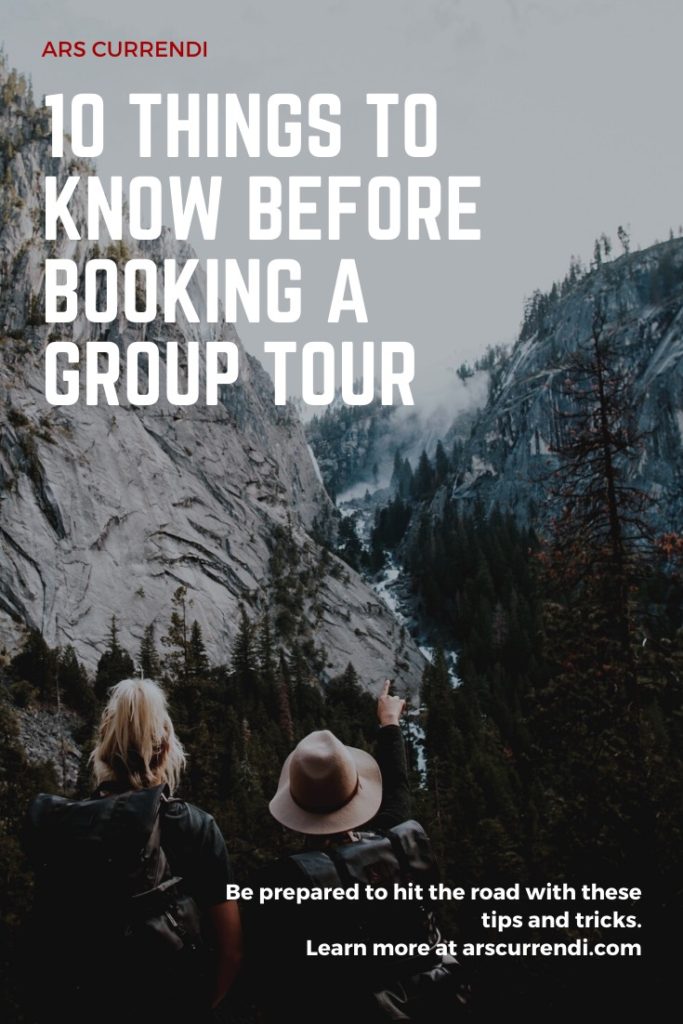


I’ve said it before and I’ll say it again: solo travel is amazing. But if you’ve never done it before, planning a solo trip can be intimidating. The thing is, it doesn’t have to be. After reading this blog post, you’ll know exactly how to plan your first solo trip and become the confident solo traveller you’ve always dreamt of.
Disclaimer: this post may contain affiliate links, meaning that if you make a purchase through one of these links, I will receive a small commission at no extra cost to you. Thank you for supporting Ars Currendi!

So here it is. You’ve never travelled solo but you want to give it a try. You might think that solo travel is lonely, or expensive… Or both. Let me tell you: if you don’t want it to be, it won’t.
When you can follow a few simple steps, planning a solo trip isn’t nearly as difficult as many people make it out to be. Here are some tips to help you organise your first solo trip.

Making a budget for your first solo trip is easier than you might think, as my friend Eric from Wandering Ravens explains.
The article above talks about making a monthly budget to get by day-to-day, but it can be applied to a travel budget perfectly.
It’s easy to travel solo on the cheap if you’ve set a budget beforehand and if you know what you’re willing to spend.
If there’s one thing that will impact the rest of this whole process, it’s your choice of destination.
There’s a whole lot of destinations for solo travellers out there, and, while you need to keep safety in mind, it really all comes down to personal preference.
Read more: The best solo travel destinations in Europe
And that’s the beauty of solo travel. Because you can do whatever you want. So do it.
Related: Why I visited an abandoned children’s hospital in Berlin
As for the date, that’s a bit more complicated. You’ll probably get the best weather during peak season, but you’ll also get the most tourists around you.
Don’t want to be surrounded by fellow travellers and don’t want to travel when it’s so cold that a cold shower feels warm? There’s a solution.
Shoulder season.
Prices are down, the weather is still okay and there won’t be as many tourists around you. It’s a win-win-win.
As a general rule of thumb: many countries have shoulder seasons in autumn and spring.
Once you know which budget to stick to, where you’re going and when you’re going there, it’s time to actually start booking some things.

First on the list: transport.
Whether it be long-haul flights, shorter flights, trains, buses or something else entirely: many aspects of your first solo trip depend on this.
Related: How to survive a long-haul flight
Where to find the best flights
Every travel blogger has their favourite tips to find the best flights, and I’m no different. Here are some useful tricks to help you find the cheapest flights:
Cheap trains and buses
If you’re not going to fly to your destination, you’ll still need a way to get there. Finding cheap trains and buses is easier than you might think. These tips will help you:
But, of course, planning a solo trip is more than booking flights. You need somewhere to sleep, don’t you?
My two favourite options for solo accommodation are hostels and Airbnbs.
How to find the best hostels
I always start my hostel search on Hostelworld, simply because it’s the best hostel platform out there. It has over 30,000 hostels and other budget accommodation on offer in 180 countries.

And, although you might not want to spend too much, it’s best not to be too frugal about your accommodation spending. Being a budget traveller doesn’t mean you have to pick the cheapest possible option for everything.
The cheapest hostels often are not the best choices. The main reason for this is that they tend to be unclean, uncomfortable, unwelcoming and not worth the few dollars you’d save.
Some other tips to make sure that your hostel of choice ends up being the best choice you could have made:
Airbnb for solo travellers
Admittedly, Airbnb is a less evident option for solo accommodation. The reason for that is the simple fact that it tends to be more expensive than other accommodation options.
Sign up to Airbnb here and get up to $45 of travel credit for your next adventure!
However, Airbnb for solo travellers is still viable. You can rent a room in someone’s house or apartment and make new friends with the owner.
And if you look closely, you might be able to strike a bargain and find some really unique lodging options.
After booking flights and accommodation, it’s time to start looking for more specific information about your first solo trip.
Which attractions seem interesting? What do you want to visit?

Making a travel itinerary is not difficult, and I’m here to prove it. Here’s how to make the perfect itinerary for your first solo trip, in just a few simple steps.
Research, research, research
Don’t overplan
Especially if you’re planning a solo trip, it’s a good idea not to overplan everything. You need some room for impromptu drinks with new friends or spontaneous exploring sessions.
If you’ve planned everything down to the hour, you’ll find yourself trapped by your itinerary and you might miss out on awesome opportunities to meet new people.
Are you still wondering how to prepare for your first solo trip?
If so, keep reading.
Planning a solo trip is easy, and you’ve already done the majority of the work if you’ve been following along.
Here are some more tips to make sure that you’re actually ready to take the leap.
Table for one
The most intimidating part about solo travel for me was dining alone.
The first time I stepped into a restaurant and said ‘Table for one, please’ to the waiter, it felt off. Because it felt like I was doing something that I wasn’t supposed to do.
But here we are, three years later.

If the thought of dining by yourself terrifies you, here are some tips to make it less intimidating:
Travel apps for solo travellers
There are a few very useful travel apps that can help you out when you’re on the road by yourself. So, while planning a solo trip, you might want to consider installing the following apps:
How to pack light
When you’re planning a solo trip, you need to keep in mind that you’re the only one who can carry your bags.
For that reason, being able to pack light is very important for solo travellers.

Here are a few packing tips to help you keep your bags as light as possible:
The biggest difference between solo travel and ‘regular’ travel is – obviously – the fact that you’re alone.
This means that staying safe is not as easy as it would be if you were travelling with family or friends.
Here are some tips on how to stay safe as a solo traveller.
The fact that you’re reading this blog post with the intention of planning your first solo trip means that you realise that solo travel is not a bad thing.
If you want to travel alone, you won’t be lonely.

But I get that you might be hesitant and need some tips on how to fight loneliness as a solo traveller.
Here are some of my best tips that I could have used on my first solo trip to Dublin:
If you’ve already travelled solo, is there anything I missed? Do you have any tips for people planning their first solo trip? Let me know in a comment!
Thanks for reading!
-S
Photo credits
PIN IT!



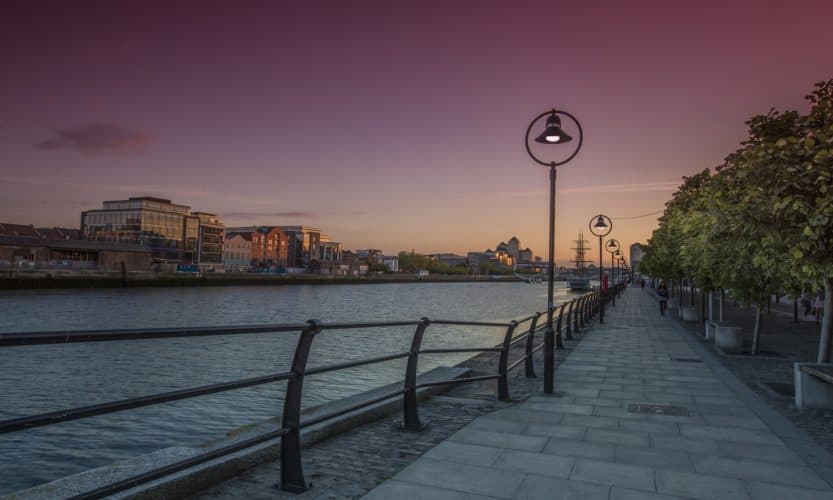
While Ireland is by no means a cheap country to visit, it is possible to visit Dublin on a shoestring budget. The Irish capital was the first destination I ever visited solo, and this comprehensive solo travel guide will give you the best Dublin travel tips to make your trip there the adventure of a lifetime.
If you’re planning your first solo trip and you’re considering Dublin as a destination, you’ve already made a great call. I know how you feel and I know how scary it can be. But I strongly believe that travelling alone can change your life.
My first solo trip was in Dublin, and I made a lot of mistakes while I was there. But still, I believe these mistakes were more due to my lack of experience than to the destination’s welcoming.
Because solo travel in Ireland is amazing.
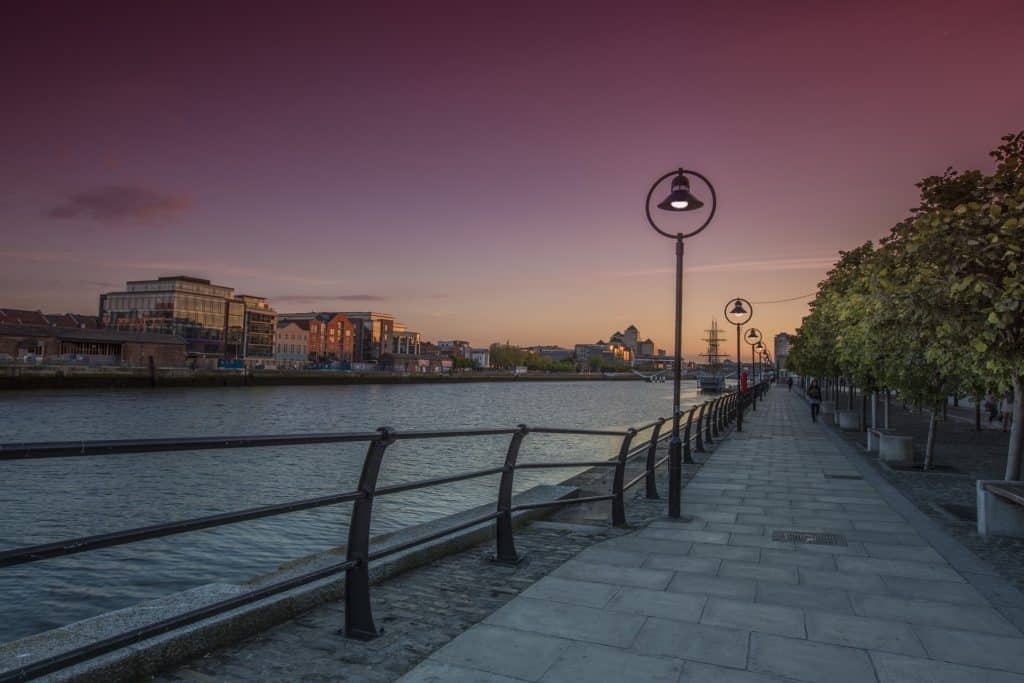
These Dublin travel tips are here to show you why that is and to make sure that you don’t make the same mistakes I did.
Check out the embedded map below for everything that is mentioned in this blog post (or click here if the map doesn’t load correctly):
This Dublin travel guide for solo travellers will consist of the following sections (click through if you’re only interested in a specific topic!):
Dublin Airport is located about 10 km north of the city centre. When you arrive at the airport, you have four main options to get you to the city itself:
Airlink / 747 (express public bus)
Airlink, also known by its route number (747), is an express public bus service operated by Dublin Bus. It’s one of the fastest ways to get from Dublin airport to the city. Buses between the airport and the city centre run up to every 10 minutes. Airlink has main stops at Busaras, O’Connell Street and Heuston.
The fare is covered by the Leap Visitor Card (see below). But if you don’t have that card, a return fare will set you back €10. You can purchase Airlink tickets online, at information desks at the airport, at vending machines outside the bus terminal or in cash, on board the bus.
Aircoach (express private coach)
Aircoach (bus line 700) is an express private coach service that runs between Dublin airport and the city centre. This service tends to be a bit faster than Airlink, but it’s also more expensive. Buses between the airport and the city run every 15 minutes.
Aircoach fares are not covered by the Leap Visitor Card. Tickets for a return trip cost €12 and can be purchased online, at the Aircoach departure desk at Dublin Airport or in cash, on board the bus.
Check the official website for Aircoach timetables.
Dublin Bus (public bus)
This is the cheapest way to get from the airport to the city centre, as a single fare will only cost you €3,30. There are two high-frequency buses (running every 10-30 minutes) from the airport to the city: bus 41 bound for Lower Abbey Street and bus 16 bound for Ballinteer.
The Leap Visitor Card covers this bus, but if you have one, you might as well opt for the Airlink, which has fewer stops along the way. But keep in mind: if you’re taking the Dublin Bus and you’re paying in cash, make sure you have the exact coins! The bus driver is unable to give you any change.
Taxi
If you don’t feel comfortable on a public bus, there’s also this option. Taking a private, metered taxi from Dublin airport to the city costs about €25-30. I wouldn’t recommend this if you’re on a budget, but if you feel like splurging, be my guest. Taxis queue up just outside Terminal 1, Arrivals level.
Although Dublin is the biggest and most populous city of Ireland, it’s still very walkable. Especially if you’re travelling alone and you don’t really have anything else to do, you might as well take a walk.

If you don’t have much time in Dublin – when you’re only there for a layover, for example – it’s a good idea to take a walking tour to explore the city’s main sights. Take a self-guided walking tour of Dublin with this article as a guide, or take a free (tip-based) guided walking tour.
Looking for something more active than walking around the city? Why not rent a bicycle?

The most popular rental bike scheme in Dublin is Dublinbikes. There are 115 docking stations spread around the city, with a maximum capacity of 15 bikes each. Every docking station also comes with a payment terminal, where you can purchase a 3 day ticket.
In order to use the system, you’ll need to take out a subscription. Don’t worry, it sounds more serious than it actually is: a 3-day subscription only costs €5. The first 30 minutes of each journey are free, and a service charge applies after that.
Check Dublinbikes’ official website for more information.
But of course, not everyone wants to walk or feels comfortable walking alone in a foreign city. For those people, there are three main options for public transport in Dublin.
As for payment for the buses, trams and DART in Dublin, there are also three options:
It’s true: the Irish are infamous among Europeans for their drinking culture. Many drinks, like stout (e.g. Guinness) and whiskey (e.g. Jameson) are produced in Ireland, and the Irish are notoriously good at enjoying a drink every now and then.
For that reason, here’s a list of the top pubs in Dublin to have a drink at as a solo traveller. Because what would a list of Dublin travel tips be without drinking recommendations?

Although it’s often been called a tourist trap, I truly believe that the OG Temple Bar is an iconic place to visit when you’re travelling to Dublin. It has a strong reputation for its great atmosphere and live music. And, more importantly, you won’t have any problems striking up a conversation with a stranger as a solo traveller. Just keep an eye on your tab, since staff tend to increase the price of your drinks over time.
Founded in the 12th century, The Brazen Head has a reputation as Ireland’s oldest pub. Live music is played here regularly, so check the website to find out if anyone’s playing when you’re there. Beside their extensive collection of Irish whiskies, gins and vodkas, traditional Irish dishes like beef & Guinness stew and smoked cod are also served at the Brazen Head.
As they describe themselves, Token is a restaurant, bar, retro arcade, pinball parlour and event space – all in one. Obvious highlights here are the retro game machines and pinball lounge in the basement. You can come here for a drink and some games without reservations, but just don’t forget to try some food (check out the extensive vegan and gluten-free options!).
Not to be confused with the Long Hall at Trinity College, the Long Hall pub has been one of Dublin’s best loved pubs since 1766. Often described as ‘an actual traditional Irish pub’, this place is definitely worth some time to enjoy a cold pint of Guinness.
P.Macs (also P’Macs and P.Mac’s) is one of Dublin’s newest pubs, but that doesn’t take away from its appeal. Some keywords here: friendly staff, soft rock, craft beers and candlelit tables. Need I say more?
The Bernard Shaw is more than just another bar – it’s an art space, pizza bus, beer gardens, event space and so much more. Whenever you’re in Dublin, something is on at Bernard Shaw. Not to mention the drinks are cheap and the atmosphere is incredibly vibrant and hip.

Of course, a big part of travelling is finding places to eat. Here’s an overview of the best places to eat in Dublin, sorted by category.
Note: all of these suggestions are great for solo travellers, and they won’t dent your food budget too much.
Here are a few tips on where to stay in Dublin as a solo traveller.
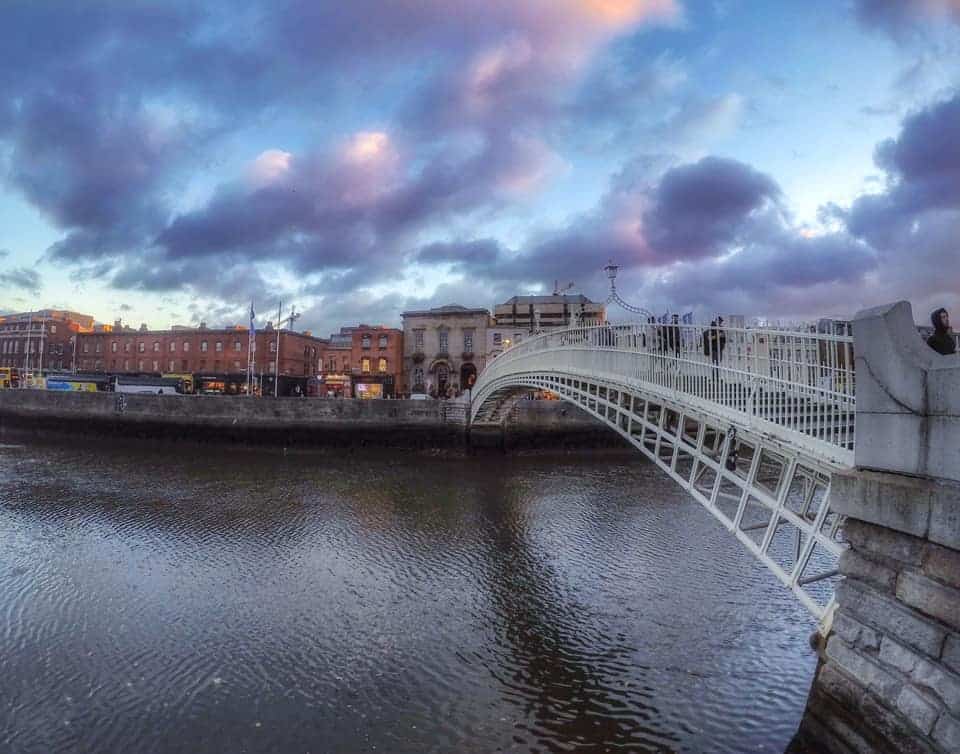
One of my most important Dublin travel tips: don’t stay in Temple Bar.
While many online articles and blog posts will try to convince you that Temple Bar is a great neighbourhood to stay, it’s not true. Especially not for solo travellers. And while these neighbourhoods will likely stay popular among tourists, you can be smarter than that.
For starters, staying in a neighbourhood that is literally the city centre will be expensive. You’ll be paying more than what you’d pay in a neighbourhood that was located slightly outside the city centre.
Secondly, good luck trying to fall asleep to the sound of drunk twenty-somethings and smashing glasses.
If you want to stay in a central location without paying too much, look for places around the canals (Grand Canal to the south, Royal Canal to the north).
This way, you’ll still be at a walkable distance to the centre, but you won’t have any of the drawbacks – like the high prices and the noise.
And, of course, hostels are still a very popular accommodation option for budget solo travellers.
Here’s an overview of some of the best Dublin hostels, keeping in mind the fact that you’re travelling alone and that you’re on a budget.
Although Airbnb might not be the best option for solo travellers – especially not in Dublin, since the tax authorities have been taking note of addresses – you might still be lucky and strike a bargain.
New to Airbnb? Sign up here for up to €30 off your first booking!
It’s definitely still worth checking out the website. Take a look at the following neighbourhoods. They’re a little further outside the centre, but they’re still easy walking distances.
Arguably the most significant Dublin travel tips I could give you are these: how to fill your days in the Irish capital as a shoe string solo traveller.
Here’s an overview of the best museums and tours in Dublin to visit as a solo traveller:

Don’t forget to check the official websites to make sure the museum is open when you want to visit, since many of them are closed on Monday.
But the museums I mentioned above are not the only free things to do in Dublin. There are some other free activities in Dublin worth checking out:

Because a city trip to a place like Dublin can feel quite overwhelming at times, you might need some time to take a breath and unwind. These places are perfect for that:
Don’t visit Dublin around Christmas. Chances are that stores and attractions will be closed on Christmas Day, Boxing Day (26 December), New Year’s Eve and New Year’s Day.
For the best weather, you’ll want to be in Dublin anywhere between May and September, with July and August as the best – but also the most expensive – months.
Now that you know where to stay, where to eat, where to drink, what to do and when to visit Dublin, it’s time for some miscellaneous travel tips about Dublin to make your next adventure that much more unforgettable.
Bring a reusable tote bag. If you intend to do any shopping at all, make sure you have a reusable bag with you. There is a plastic bag levy in Dublin and most retailers only provide heavy-duty bags, which cost a lot.
Let your pint of Guinness settle. If there’s one way that Dubliners pick up outsiders, it’s this. There’s a whole science to pouring the perfect pint of Guinness, and the two-minute settle time (well, 199.5 seconds, actually) is an essential part of it.
Tip 10% in restaurants. Tipping is not as compulsory as it is in places like the United States, but a 10% is expected. If the service you received was exceptional, you could tip 20% or even more.
Take a day trip to Howth. If you’ve still got one day left in your travel itinerary that you have no idea how to fill in, consider a day trip to this nearby fishing village. There are plenty of things to do in Howth!
Check out Guinness’ secret brewery. On Thursday, Friday and Saturday, Guinness operates a ‘secret’ brewery, called Open Gate Brewery, at St. James Gate. Brewers get to experiment with different beer types, ingredients and flavours, and you can also get some food there. You do have to book tickets in advance, though. (Entry ticket + tasting paddle with 4 beer samples: €9)
Now you know why Dublin has been one of my favourite places to travel solo in Europe ever since I stepped foot in the Irish capital.
Are there any Dublin travel tips I missed? Would you add anything else to a Dublin itinerary? Let me know in a comment down below.
Thanks for reading!
-S
Disclaimer: This post contains affiliate links, meaning that if you make a purchase through one of these links, I will receive a small commission at no extra cost to you. Thank you for supporting Ars Currendi!
PIN IT!



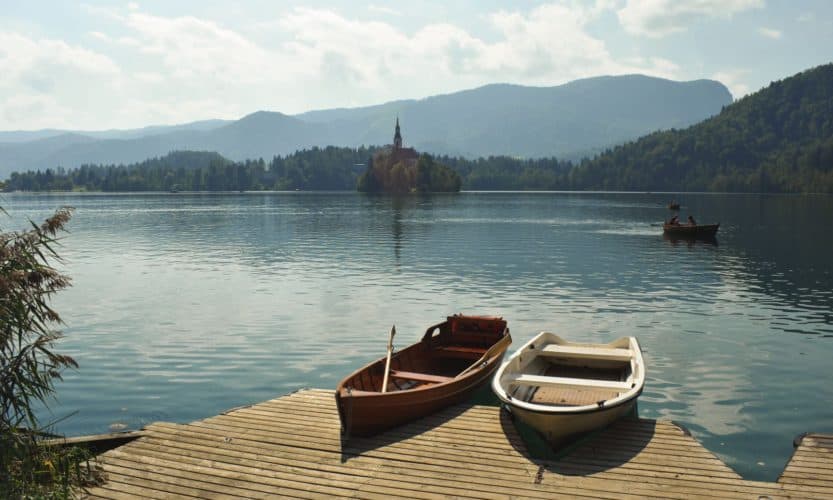
Breathtaking nature, orange wine and bustling cities. What else could you be looking for in your next travel destination? Well, Slovenia has it all. These are my top Slovenia travel tips that will guide you through the holiday of your dreams.
Nobody needs to be convinced that Europe is a popular travel destination. In fact, travel and tourism directly contributed about 14 million jobs to the European economy in 2017.
Read more: My favourite solo travel destinations in Europe
And while that’s great news for Europe, it might make you feel like there are too many tourists. Especially if you’re visiting popular European hotspots like Paris and Rome.
Luckily, you won’t have that problem in some of the more undiscovered European countries – like Slovenia. This country will give you great attractions without the famous European crowds. Think about this:
Slovenia will give you all of the above, but without thousands of people doing the same thing – and for a fraction of the price. And in this article, I’ll tell you all about why I fell in love with Slovenia.
(Click on the links below to go to the relevant section of this blog post!)
On this map, you can find every place that is mentioned in this blog post.
Slovenia travel tips are no use to you if you can’t even get to Slovenia. So here’s a short section on how to get to this hidden gem.
Even though there’s only one airport in the entire country (near its capital Ljubljana), Slovenia is easily accessible by plane from all over Europe. Two low-cost carriers fly to Ljubljana:
Other than that, various ‘regular’ airline carriers fly to Ljubljana, but that will probably cost you a bit more. You may want to consider flying to nearby airports (like Trieste in Italy or Zagreb in Croatia) and taking public transport from there to Ljubljana.
If you don’t mind your trip taking a bit longer or if you want to travel in a more environmentally friendly way, there are various direct trains from Germany, Austria, Italy and Switzerland, among others. This is a great overview of trains to and from Ljubljana by The Man in Seat 61.
Now, this is the part you’ve been waiting for. The actual Slovenia travel tips. So let’s get this show on the road.

As the heading of this section suggests, this will be an overview of places of interest in Slovenia. In other words: whether or not Slovenia is worth a visit. (Spoiler alert: yes, it is.)
I’m not claiming to know the ins and outs of Slovenia, so if you visited recently and know of any place I don’t mention, please let me know in a comment. I’ll be happy to update this post, because I essentially strive to give my audience the most relevant travel tips possible.

The Slovenian capital is mostly known for its reputation as one of the greenest cities of Europe. Whether you’re strolling down its narrow streets or its wide avenues, you’ll feel like you are living in a fairytale.
Some things you can’t miss in Ljubljana: take a stroll along the river Ljubljanica, admire Prešeren Square (Prešernov Trg) and its pink baroque church, walk along the Dragon Bridge and, last but not least, take the cable car up to Ljubljana Castle.

Bled is a small city in the north of Slovenia, mostly known for its lake, with a small island and church in the middle and a castle overlooking the lake from a nearby cliff.
Don’t forget to check out the lake from various viewpoints, hike up to the castle and admire the view, visit the island on the lake and take a trip in a traditional Pletna boat.

About 4 km (2,5 miles) to the north-west of Bled, you’ll find Vintgar Gorge: a gorge-ous ravine along the Radovna river. Vintgar Gorge is a perfect day trip from Bled as it will only take you about half an hour to get there.
In Vintgar Gorge, you’ll see wooden walkways guiding you through the ravine and spectacular natural scenery, and you’ll hear the sounds of birds singing and the water of the river running through the valley.

Lake Bohinj is the second Slovenian lake near Triglav National Park (with Lake Bled being the first). I personally like Lake Bled more than Lake Bohinj, but be sure to judge for yourself.
And although many people might prefer Lake Bled, one aspect of Lake Bohinj alone guarantees a mention in this list: its tranquility. Lake Bohinj is a lot less crowded than Lake Bled is, and it’s often seen to be more authentic and less aimed towards tourists.
With a surface area of over 880 square km (340 square miles), Triglav National Park (often abbreviated to TNP) is one of Europe’s biggest and most admired nature reserves. This park has something for everyone, all year round.
Points of interest include Mount Triglav (which every Slovene is expected to climb at least once in his/her life), Vršič Pass and Pokljuka Plateau.
Now, I’ve given you some pointers as to where to go, but you still don’t really know what to do in Slovenia. And that’s where this four-day travel itinerary comes in.
This is what to do during four laid-back days in Slovenia. (Based on my own trip to Slovenia with one of my best friends this summer)
Our flight to Slovenia arrived in the late afternoon. After arriving at the airport, we took a taxi to our hostel, dumped our bags in our room and went out on the town for dinner.
On your first night, you’ll want to grab dinner at Pop’s Place, a trendy burger bar in Ljubljana’s vibrant city centre. This was for sure one of the best burgers I’ve ever eaten, and they have a large collection of local craft beers as well.
After dinner, check out what Prešeren Square and the Triple Bridge look like at night on the way back to your accommodation.
Related: How to find cheap accommodation as a solo traveller
The first thing you’ll want to do on this morning is to get breakfast at Bazilika Bistro, a small café that serves breakfast and lunch – with loads of vegetarian and vegan options as well.
While you’re on your way to Bazilika, check out the Ursuline Church of the Holy Trinity. In case you’re too hungry to go inside the church, don’t worry. You’re not missing out on a whole lot. The church’s front facade and the adjacent city square are just as impressive, if not more so.
After munching on some banana bread, oatmeal or pie at Bazilika, make your way to Tivoli Park. Admire the flower garden, breathe in the clean green air and rediscover your child-like sense of wonder at the playground. Because shame and regrets are overrated.

Walk back to the city centre (Prešeren Square, Triple Bridge, Ljubljanica) and see what it’s all about during the daytime. Walk along the river Ljubljanica on a street called Cankarjevo nabrežje and find a restaurant for lunch.
Now that you’ve regained the energy you need for an afternoon of exploring, it’s time to discover the old town. Head to Gornji Trg, a beautiful square that’s a lot less crowded than Prešeren Square, but just as interesting.
Get lost in the small cobbled streets around Gornji Trg and find out what Ljubljana is actually like.
Next up on the travel itinerary: Ljubljana Castle (or Ljubljana Grad, as the locals call it). First, take the funicular to go up the hill, or hike it if you’re up for a challenge. Then, admire the view, learn about the history of Ljubljana and enjoy the atmosphere.
Come back down the hill, take a break and have a drink. Because you deserve it.
By now, it’s time to get back to your hostel, Airbnb, hotel, or wherever else you’re sleeping. Freshen up, maybe take a shower or put on some new clothes.
After that, find a restaurant for dinner on your last night in Ljubljana. We opted for TaBar, a tapas restaurant close to Pop’s Place. I strongly recommend you have a glass of orange wine here – or anywhere else, for that matter. And yes, I said orange. While that might sound strange, you’re going to have to trust me on this.

So this is the day you’re leaving Ljubljana for your two day trip to Bled.
So get up, find some breakfast — at your hostel, at a supermarket, at Bazilika — and get ready for the day that’s coming.
Get to the main bus station in Ljubljana (LJUBLJANA AVTOBUSNA POSTAJA), either on foot or by public transport – depending on your accommodation’s location. There are a few different companies offering a coach or bus from Ljubljana to Bled.
You can either buy your bus tickets online or buy them at the counter inside the bus station. The clerk should know just enough English to understand you’re trying to get to Bled.
I recommend you to take the bus in the early afternoon. The bus between Ljubljana and Bled will take just over one hour, which leaves you with plenty of time to locate your accommodation in Bled. (For example, we stayed in this gorgeous Airbnb!)
Related: get a $35 discount for Airbnb by signing up here!
In case you still need to kill some time before your bus gets there, check out Metelkova, a former military headquarters that has been turned into a social and cultural centre.
Grab a quick bite in or around the bus station and board your bus. Just over an hour later, you should arrive at one of Bled’s bus stops, depending on which company you used to get from Ljubljana to Bled.
Once you’ve settled in your accommodation, dropped off your bags and freshened up, it’s time to head to the supermarket and pick up some snacks and drinks.
As for the rest of the day, you can fill it in as you please. This is your free afternoon and night, if you will. We hung around our Airbnb, made dinner and hit the hay early for once, so that we’d be well rested for day four.
This was the day I was most looking forward to. And you’ll soon find out why that is.
You should be set for breakfast, since you went to the supermarket on day 3 and presumably bought some granola, bread or other breakfast food.

Your next destination is Vintgar Gorge. Now, I can hear you thinking: “How do I get from Bled to Vintgar Gorge?” Well, there are a few options:
If you feel like you need some energy before you enter the park, there’s a small restaurant at the entrance where you can get some food or drinks.
Once you’ve gotten to Vintgar Gorge, pay the €5 entry fee (cash only!) and feast your eyes on the gorgeous — excuse the pun — scenery around you.

For your way back from Vintgar Gorge to Bled, you have the same options as before. If you’re feeling too tired to walk, you might want to call a cab – like we did.
By now, it’s lunchtime. Find a restaurant in Bled and feast.
The following Bled activities can be experienced in any order you want, so I’ll just give you the information you need and you’ll have to decide when you want to do what.
After getting the most out of your visit to Bled, head back to your Airbnb, hostel or apartment and cook dinner for the last time before you head back home.
Now, if you really need to ask me if Slovenia is worth a visit after reading all of this, I don’t think this last bit is going to convince you.
But yes, you should definitely visit this European hidden gem. This list of Slovenia travel tips should get you well on your way to plan the ultimate adventure there.
Disclaimer: I am aware of the fact that Slovenia is more than Ljubljana and Bled. But so far, I have only visited these places, so I don’t feel comfortable giving you advice on any other destinations in Slovenia.
Thanks for reading!
-S
PIN IT!



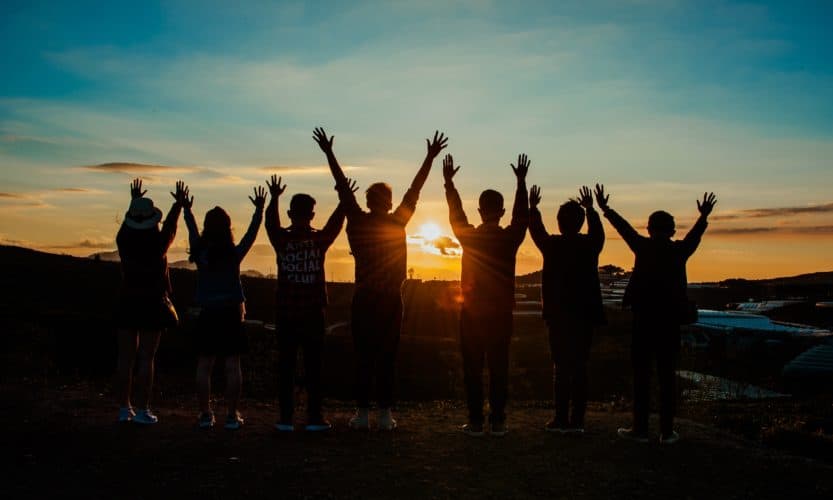
While solo travel often leads to unforgettable experiences (how about sleeping in a temple on top of a cliff?), it can tend to become a bit lonely if you don’t meet people to share the adventure with. It doesn’t have to be, though. This article will give you invaluable insights to help you when making friends as a solo traveller on the road.
As a solo traveller, the type of accommodation you choose can make or break your entire trip. For example, staying in a hotel probably isn’t your best bet if you want to make friends. However, there are three terrific alternatives for you to choose from.
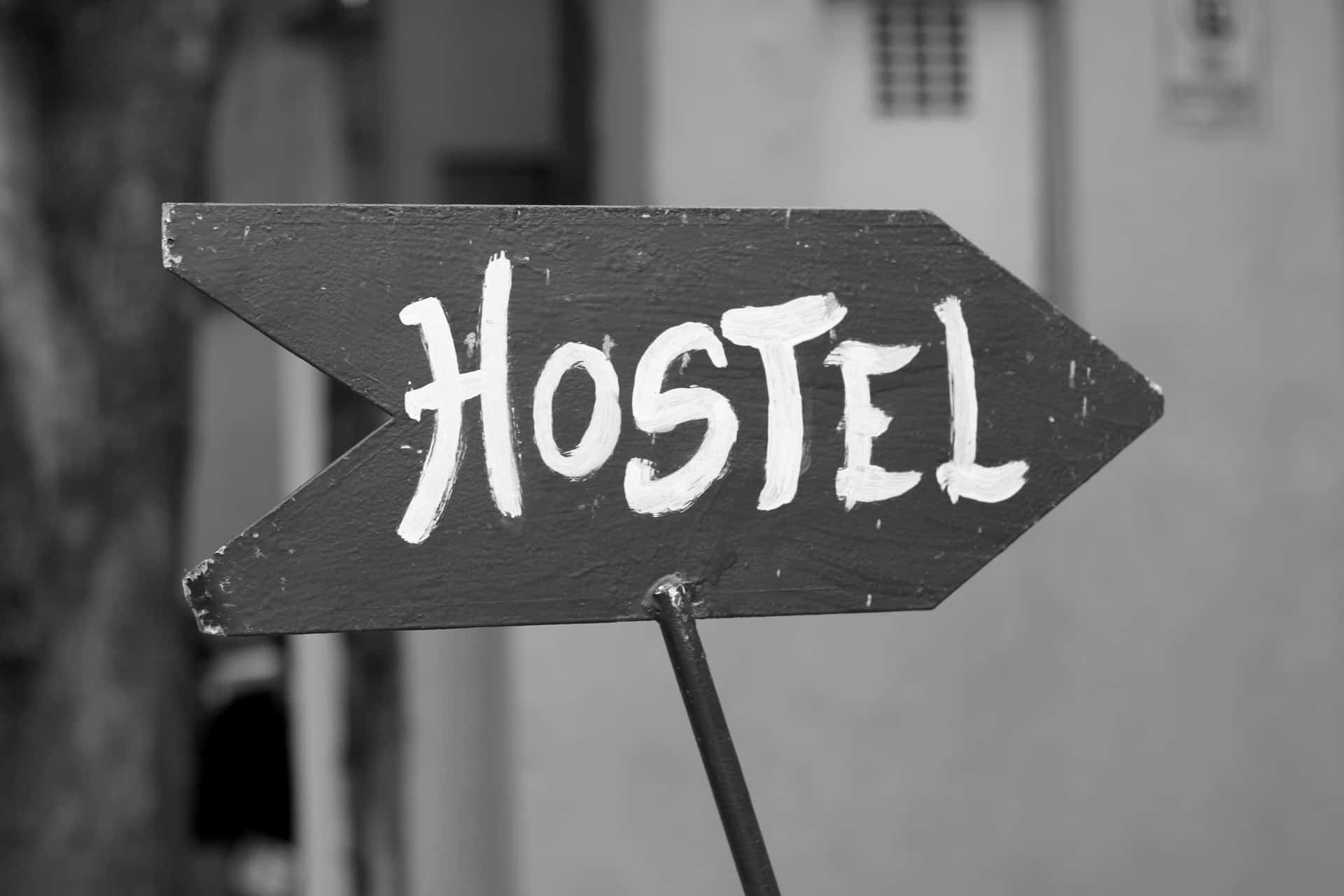
If you haven’t heard of hostels by now, I’m pretty sure you’ve been living under a rock for the last decade. Nowadays, hostels are no longer the unkempt, shady places where people go to be murdered. You can get a bed in a shared dorm room for a fraction of the price of a hotel room.
Especially for solo travellers, hostels are a trendy, social, and – most importantly – cheaper alternative for hotels. They almost always have communal spaces where you can meet like-minded people and are therefore the perfect place for make friends as a solo traveller.
In case you’re not convinced yet, hostels often have a guest kitchen where you can cook your own food and save some money, are generally located around the city centre and the staff are mostly young travel enthusiasts with lots of information about local happenings.
One of the best ways to find hostels online is by browsing hostel websites, such as Hostelworld, Hostels.com and Hostelbooker.
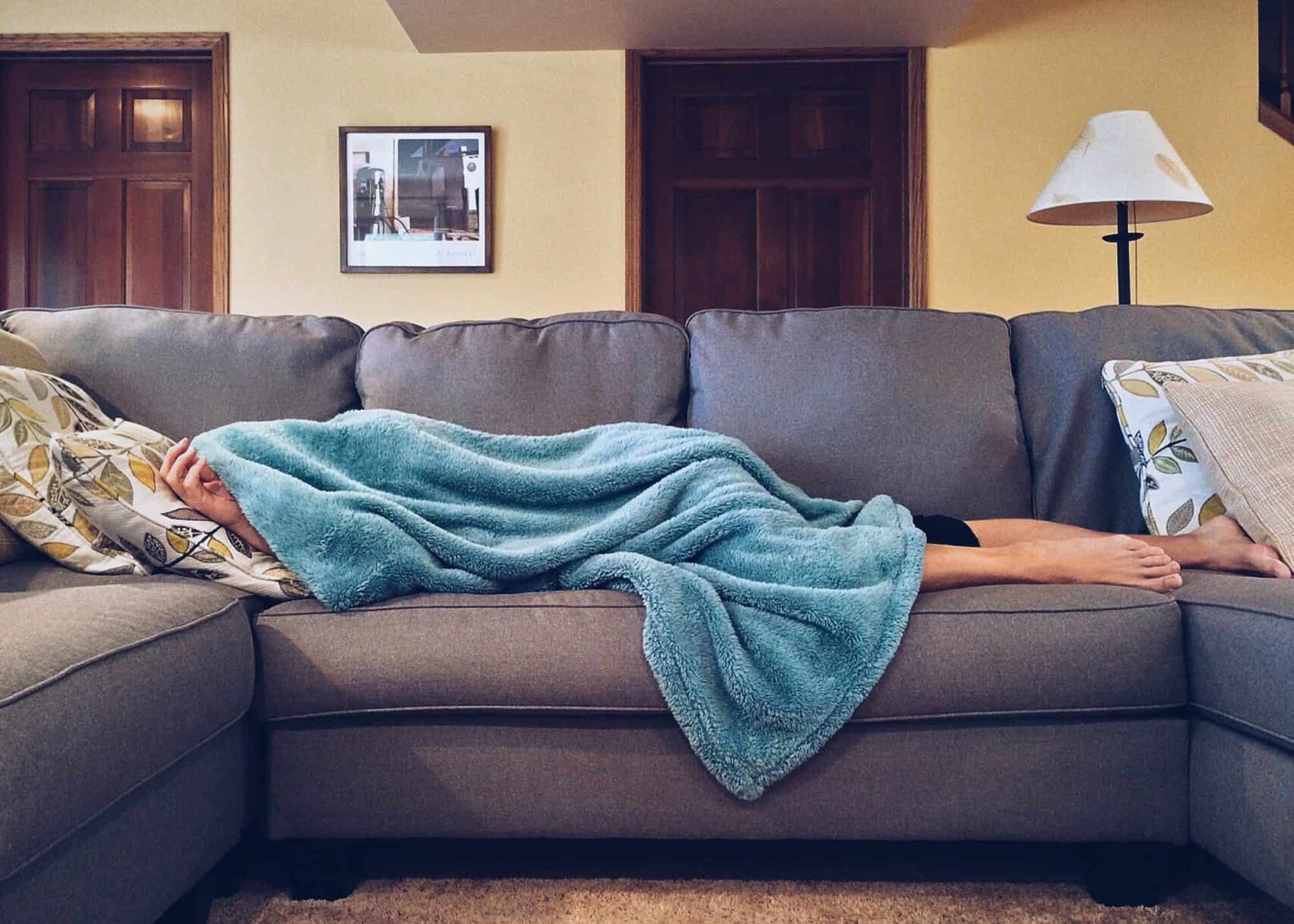
Through Couchsurfing, you essentially get to stay with a local for free. Not only does this mean you get free accommodation, which is usually a considerable chunk of any travel budget, it also means that you get to stay with a person who can tell you all about the culture of the place you’re visiting.
Many people come to Couchsurfing for the free accommodation but stay for the people they end up meeting and because they want to give back to the travel community by hosting their own house or apartment for other surfers.
A widespread concern about surfing with somebody you’ve never met is safety. After all, you’re staying in somebody’s home, exposing yourself to many possible dangers.
However, most Couchsurfing hosts are people who were surfers themselves at some point. They’ll understand what a first-time surfer is going through and will undoubtedly try their best to make you feel comfortable in their home. The website also has several safety checks, such as official ID verification and reviews from fellow surfers.
As long as you use common sense when selecting your host and during your actual CS experience, you should be fine.
Airbnb is one of the most famous websites for short-term property rentals, and it’s very often used among travellers. The most obvious advantage of this website is that you’re usually getting a fully furnished home for a very fair price.
On the subject of price, Airbnb prices tend to be somewhere between a standard bed in a hostel dorm room and a room in a hotel. That being said, it might not be the best choice for solo travellers. However, if you can’t seem to find a good hostel, hotel or CouchSurfing host, you might want to consider looking on this website for accommodation.
You might think that renting an Airbnb as a solo traveller is not very likely to make you any friends, but I’d have to disagree. When I went to Malta, I had to look for an alternative for my CouchSurfing host who bailed on me at the last minute, and I ended up sleeping in Daniel’s home.
He and his girlfriend were renting out rooms and beds in communal areas to travellers from all around the world. Daniel ended up being one of the best parts of my trip because he was able to show me all around and give me cool insider tips.
Food and drinks are one of your main costs as a (solo) traveller, but that doesn’t mean that you can’t have some fun and make friends while eating. On the contrary, it might just be one of the best ways to make friends.
If you’re staying somewhere for longer than a couple of days, becoming a regular at a bar or restaurant might be an option for you to meet new people. The staff will start to recognise you and other local regulars may strike up a conversation with you.
Another risky tactic you could use is to approach another person who is eating alone and saying something along the lines of “Hey, I noticed you were eating alone. Mind if I join you?” This is risky because that person may actually want to eat by themselves and turn down your company.
But hey, it’s worth a shot, right?
There are several apps and websites that aim to connect (solo) travellers with people that can offer an authentic representation of local cuisine. This experience is often called “social dining”. Doing this can be an amazing way to both get a taste (pun intended) of what the food in your destination is actually like and maybe make a local friend.
A few examples of these websites are WithLocals, EatWith (Android / iPhone) and MealSharing. Moreover, you might get lucky and find a local that will cook for you on Couchsurfing or Airbnb.
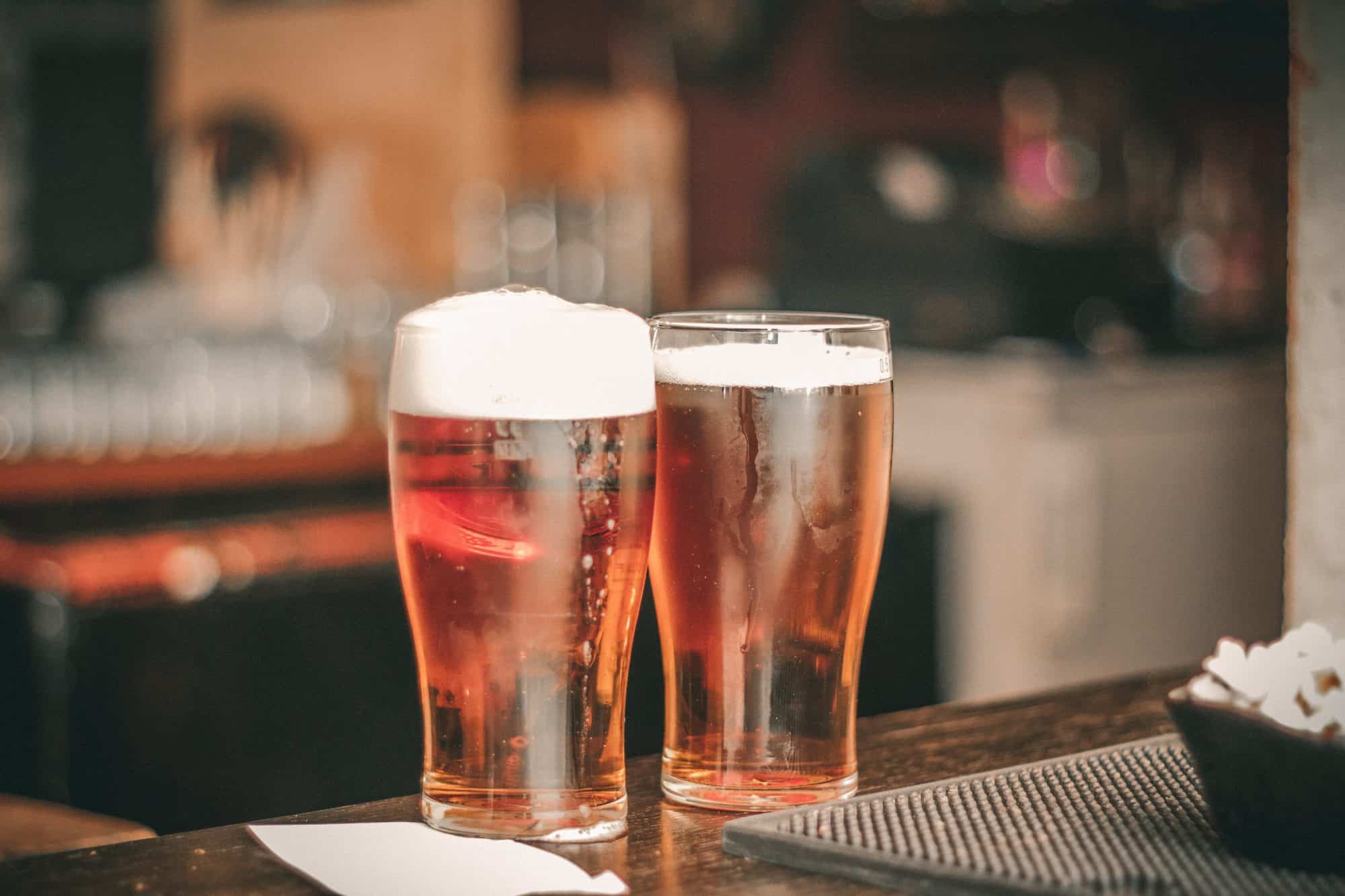
Whether you just want to play board games and get to know some fellow travellers or you want to indulge in beer and tequila for a memorable night (or, more accurately, a night that is unforgettable but hard to remember), hostel bars are the place to be.
That being said, it’s a good idea to comb through guidebooks and browse the internet to find out what kind of hostel you’ll be staying at. It’ll be way easier to find people to go out with at a party hostel than at a boutique hostel. That’s just another choice you’ll have to make.
Fun fact: in most party hostels, you’ll be able to spend time in the communal areas (e.g. the bar), even if you’re not sleeping there yourself.
Fun conversations over dinner or lunch have a way of forming new friendships between strangers. Whether it’s a bowl of pho in Vietnam or pizza in Italy, chances are that you’ll meet new people over food.
Besides, there are many ways to share food with others. You can share some snacks in a hostel bar with other travellers, you can eat with locals through the aforementioned apps and websites or you can approach someone eating alone at a restaurant. The possibilities are endless.
The most important thing to do when you’re trying to make friends as a solo traveller is to be open-minded and accepting. After all, if you’re not going to accept other personalities, lifestyles and cultures, what’s the point of travelling at all?
On the road, especially as a solo traveller, it’s more important than ever to adopt a tolerant attitude. Not only because you should show respect for the culture you’re visiting, but also because you could miss out on a lot of special friendships from people all around the world.
So, next time somebody approaches you while you’re waiting for the bus or you’re standing in line to visit a museum, don’t just shrug your shoulders. Have a conversation and see where it leads. Who knows? You may just have made a new friend.
Nowadays, having a plan that tells you where to go is essential while travelling. You probably don’t want to be aimlessly wandering around a destination and go back home just to realise you haven’t actually seen anything.
While it’s nice to have a plan to fall back on, this plan shouldn’t be an absolute must, but rather a general guideline with wiggle room. This way, if somebody should invite you to a rooftop barbecue or ask you to go visit a temple together, you don’t have to turn them down.
It’s also good practice not to overplan your holiday. For example, you could leave one day a week without any plans as a buffer for any unexpected things that may have come up.

As Neale Donald Walsch put it so eloquently, life begins at the end of your comfort zone. This quote implies that you need to have the courage to leave your comfort zone in order to really experience life.
You probably wouldn’t even be travelling by yourself if you had stayed in your comfort zone. You’re heading in the right direction. Now, it’s time to take that one step further, especially if you’re an introverted solo traveller.
It’s not easy to put yourself out there and be vulnerable in front of strangers. If it pays off, it’s that much more rewarding, though.
The comfort zone is overrated, anyway.
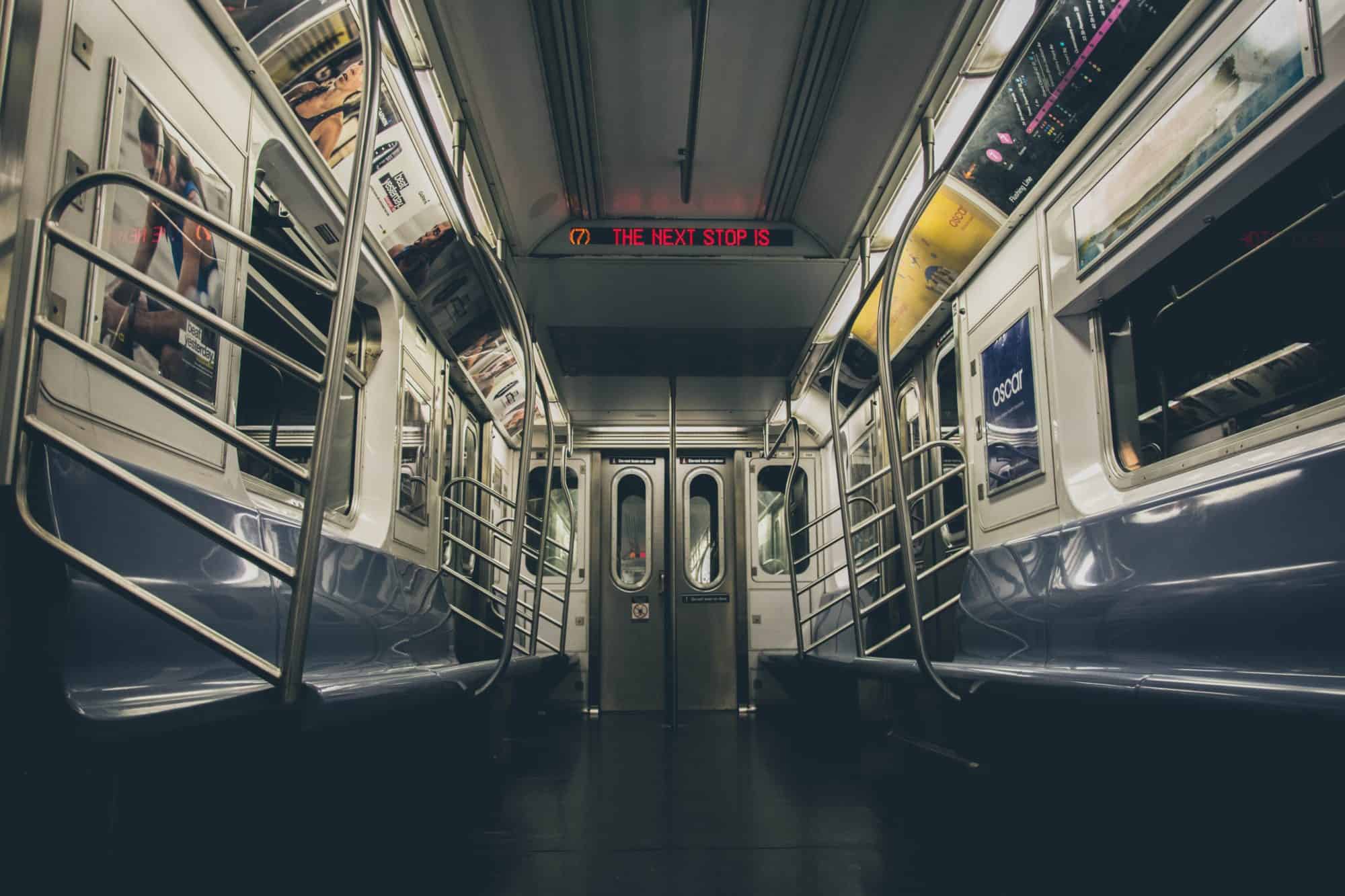
Drinking in hostel bars or having a chat with a stranger on a tour are far from the only ways of making friends abroad, although they might be the most conventional.
You can meet people in transit. During a long train ride between two destinations, on a plane, or even on a short-haul bus ride.
Related: How to survive a long-haul flight
Better yet, you could just end up having a conversation with a traveller who’s heading in the same direction as you, which means you’ve already made a friend before even arriving at your destination.
Anywhere you go, plenty of activities will be organised for travellers like you and locals alike. These activities are the perfect place to meet new, like-minded people, and thus pose the ideal opportunity to shoot your shot.
Making friends as a solo traveller has never been easier.
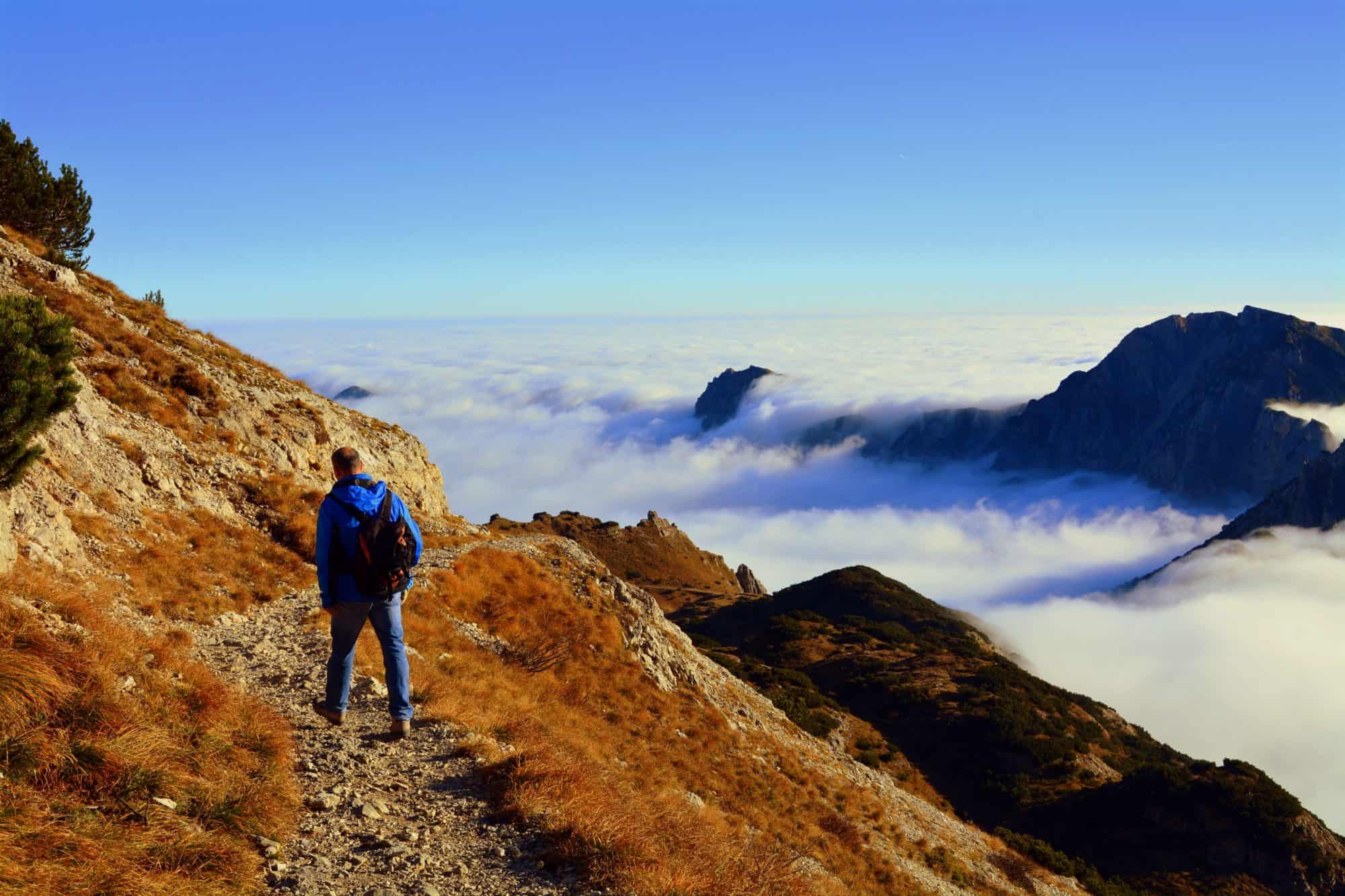
If you’re planning on staying in a hostel during your solo trip, you’re in luck. Not only because it’s incredibly easy to meet new friends, but also because most hostels make an active effort to organise trips and activities for the less extroverted and enthusiastic among their guests. They often have years of experience, so they know what can get people to talk to each other. Joining these activities is a surefire way to make new friends, or at least get to talk to someone.
Another platform that aims to bring its people together is Airbnb. Through their “Experiences” programme, they try to unite locals and travellers so that both can enrich their lives through a unique experience that the destination has to offer. For example, you can play football with locals in Barcelona or attend a traditional tea ceremony in Kyoto.
Additionally, you could just browse through Facebook Events in your destination while you’re visiting.
Related: The best solo travel destinations in Europe
First of all, it’s very likely that you’d only take a class if you’re interested in the subject of the class. As a consequence, it’s also very likely that the other people in the class are interested in its subject.
Quick situation sketch: you’re in a room with a bunch of people, trying to learn something – let’s say you’re learning how to make pasta. In this scenario, it’s impossible for you not to have anything to talk about, because you can always fall back on pasta – the thing you’re learning about – should the conversation not go as planned.
Another plus that you can’t neglect is that you’re learning a new skill. Now, give me one good reason why you shouldn’t take a class.
Admittedly, I’m going out on a limb here.
Imagine you’re on a city trip to Dublin, walking around the city centre when suddenly you see this guy across the street wearing a t-shirt of one of your favourite bands. What do you do?
As a solo traveller, the only right answer is to approach the guy and ask him about it. Best case scenario: you start talking about the band because you’re both massive fans and you become friends. Worst case scenario: the guy looks at you like you’re an alien because he borrowed the t-shirt from someone else and you feel awkward for 30 seconds. Oh well, it was still worth a try, right?
Finding something to share a conversation over doesn’t have to be difficult. It can be something as small as a pin on your luggage, an iPhone case or a sticker on your laptop.

The point I’ve been trying to make in this whole post is that solo travel doesn’t have to be lonely. If there’s one thing that proves that, it’s that you can still go on a group tour.
Obvious advantages include meeting other people and not having to plan everything yourself.
Two fantastic companies that organise group tours (both for solo travellers and for people who are already travelling in a group) are Busabout and TourRadar. Busabout uses a hop-on-hop-off system where you get to choose your own itinerary, giving you the flexibility of solo travel and the convenience of a group tour. TourRadar creates very professional group tours in small groups so that solo travellers and introverts would feel included as well.
We live in the twenty-first century. There’s nothing taboo about meeting people online, whether it be a date on Tinder or another traveller who you can take a tour or have some fun with.
Using an app is a godsend for introverted solo travellers.
Here are some of my favourite solo travel apps to use in 2020.
Backpackr (Android / iPhone) lets you input your date and location and shows you all travellers who are there at that time. An algorithm will decide if your interests match enough and let you message each other to meet up or to travel together. The app will also send you push notifications every time someone new is on their way to your destination.
If you’re looking to date while on the road, you may want to check out TourBar (Android / iPhone). The app is something between Tinder and the aforementioned app. You select someone based on their profile and strike up a conversation if it’s a match.
Tourlina (Android / iPhone) works on the same concept as Backpackr, but it’s the first of its kind to only feature women. New profiles are checked thoroughly and only verified accounts can talk to one another.
Aside from dedicated apps that help you meet a travel companion, there are several other ways to use the internet and social media to your advantage as a solo traveller.
Facebook is one of the big ones. For starters, you can write a post to tell your friends where you’re going. They might know someone there. (You can obviously also do this on other social media, such as Twitter and Instagram).
Secondly, you could check out dedicated Facebook groups of your destination. Nowadays, there’s pretty much a group on Facebook for everything, so chances are you’ll find what you’re looking for.
Moving on from Facebook, you can also find interesting events on Couchsurfing. You can select where and when you’re going and you’ll instantly get a list of activities happening in your area. Who knows? You might end up going to a house party, hiking a mountain or sailing in the middle of the ocean.
The most important lesson to be learnt from solo travel is that your own company is more than enough. Being abroad by yourself really has a way of making you appreciate your own personality and everything you stand for.
Nowadays, too many solo travel tips (including this blog post) focus on meeting new people as a solo traveller. That’s why I think it’s important to add that you don’t have to go out and meet people just because the internet is telling you to.
The whole point of travelling alone is to figure out what you want and who you want to be. That includes deciding whether or not you want to make new friends.
Anyways, I hope you enjoyed reading and learnt something. If you used these tips and met some new people, I’d love to hear about it on Twitter!
If you have any tips to make friends as a solo traveller, feel free to leave a comment down below.
Thanks for reading!
-S
Design by NXNW.